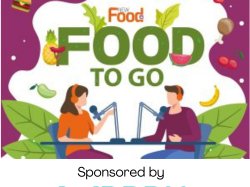Episode 49: Applications of AI Part Two with Bas van der Velden
- Like
- Digg
- Del
- Tumblr
- VKontakte
- Buffer
- Love This
- Odnoklassniki
- Meneame
- Blogger
- Amazon
- Yahoo Mail
- Gmail
- AOL
- Newsvine
- HackerNews
- Evernote
- MySpace
- Mail.ru
- Viadeo
- Line
- Comments
- Yummly
- SMS
- Viber
- Telegram
- Subscribe
- Skype
- Facebook Messenger
- Kakao
- LiveJournal
- Yammer
- Edgar
- Fintel
- Mix
- Instapaper
- Copy Link
Posted: 8 March 2024 | New Food | No comments yet
Josh and Grace speak to Bas van der Velden from the Data Science team at Wageningen University to understand how big data can keep food safe.
This episode of Food to Go is brought to you by Merck Life Science. Explore the possibilities and learn more about Merck’s contribution to this exciting field at www.sigmaaldrich.com/CulturedMeat
In part two of this series, Josh and Grace learn the nuts and bolts of AI usage in the food and beverage indsutry, as they speak to Bas van der Velden of Wageningen University in the Netherlands.
Bas explains why big data could soon become a key weapon in the food safety arsenal, and also reveals why using AI to flag danger isn’t as novel as you might think…
How do we use big data to keep food safe? In a nutshell, why does this matter to the food and beverage industry?
Bas van der Velden: Why does this matter? I think that by not analysing all this data, you get to anecdotal evidences and we would like to work an evidence-based approach. And to do that, you really need to analyse the patterns in the data and data’s becoming more complex and more abundant.
Back in the day, it used to be just one measurement per sample. Now we have in some cases entire metagenomic profiles which we need to analyse. So the data becomes more and more complex and therefore the methodology that we need to adopt to better processes data and to get clear patterns and also warnings.
And where does the AI come in then?
Bas van der Velden: We have multiple approaches that we use. For example, let’s say a sample comes in and it gets smashed up and we look at it on a microscope. A human then looks at whether there’s something in there that shouldn’t be in there, but we can of course also use computer vision techniques for that. Those are similar to what the big tech companies have been using a while, but we in research have been using those techniques also for decades now.
Related topics
Data & Automation, Food Safety, Research & development, Technology & Innovation





